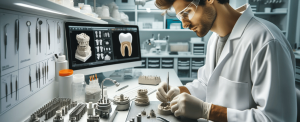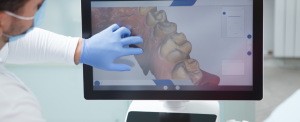As the dental industry evolves, dental labs in the United States face a challenging landscape heading into 2025. The adoption of advanced technologies such as CAD/CAM design and 3D printing, combined with growing customer expectations, is transforming the sector. Additionally, the need to establish strategic partnerships with CAD design partners is becoming a critical factor in staying competitive. Read on for more details.

1. Technological adoption: an inevitable necessity
In 2025, the integration of advanced technologies will no longer be optional—it will be essential. 3D printing and CAD/CAM systems are revolutionizing how dental prostheses are designed and manufactured, offering benefits like precision, speed, and personalization.
The learning curve and initial investment
One of the biggest challenges for dental labs is the learning curve associated with these technologies. Many dental technicians require intensive training to master advanced tools. Moreover, the initial costs of equipment, such as high-quality 3D printers and intraoral scanners, can be prohibitive for small or medium-sized labs.
Competitive advantages of technology
Despite the costs, labs that embrace these technologies will be able to set themselves apart by offering shorter turnaround times and highly precise products. The ability to produce crowns, bridges, and other devices with near-zero error margins is a key advantage in an increasingly competitive market.
2. Evolving customer expectations
Modern patients, empowered by unprecedented access to information, are redefining quality and service standards. By 2025, dental labs must adapt to these demands to remain relevant.
Demand for personalization
Today’s patients expect dental devices that are not only functional but also aesthetically pleasing and personalized. This compels labs to invest in technologies that enable rapid, high-precision custom designs. For example, CAD/CAM tools allow for the adjustment of a crown’s design based on each patient’s unique specifications.
Faster turnaround times
Speed is a top priority for clients, especially in cases of dental emergencies. Labs implementing advanced technologies can streamline production times, significantly reducing the time needed to deliver complete dental prostheses.
Collaboration with dental clinics
The connection between labs and clinics is also becoming more crucial. Dentists expect real-time reports and detailed designs from their labs. Those that can provide this integration will not only improve customer satisfaction but also strengthen long-term relationships.
3. The importance of strategic partnerships with CAD design partners
In this context, having a reliable CAD design partner is becoming an essential component of success. These partnerships enable dental labs to focus on other critical areas of the business while outsourcing highly specialized tasks.
Key benefits of CAD design partners
- Scalability: Partners allow labs to handle high work volumes without compromising quality.
- Expertise: They provide specialized knowledge that can be difficult to develop in-house.
- Cost reduction: Outsourcing design eliminates the need to invest in additional tools and staff.
Choosing the right partner
Selecting a CAD design partner is not a decision to take lightly. Key factors to consider include:
- Experience and reputation in the industry.
- Ability to handle customized projects.
- Compatibility with the lab’s existing digital systems.
- Adherence to expected quality and delivery timelines.
A transformative outlook
From this perspective, the dental industry is at a moment of transformative change, where every decision can shape the trajectory of dental labs. Taking a proactive approach to challenges is not just a strategy but a philosophy that can open new opportunities. Those who embrace innovation, build strategic relationships, and adapt to increasingly demanding customers will be well-positioned to lead in this new era of dental care.


